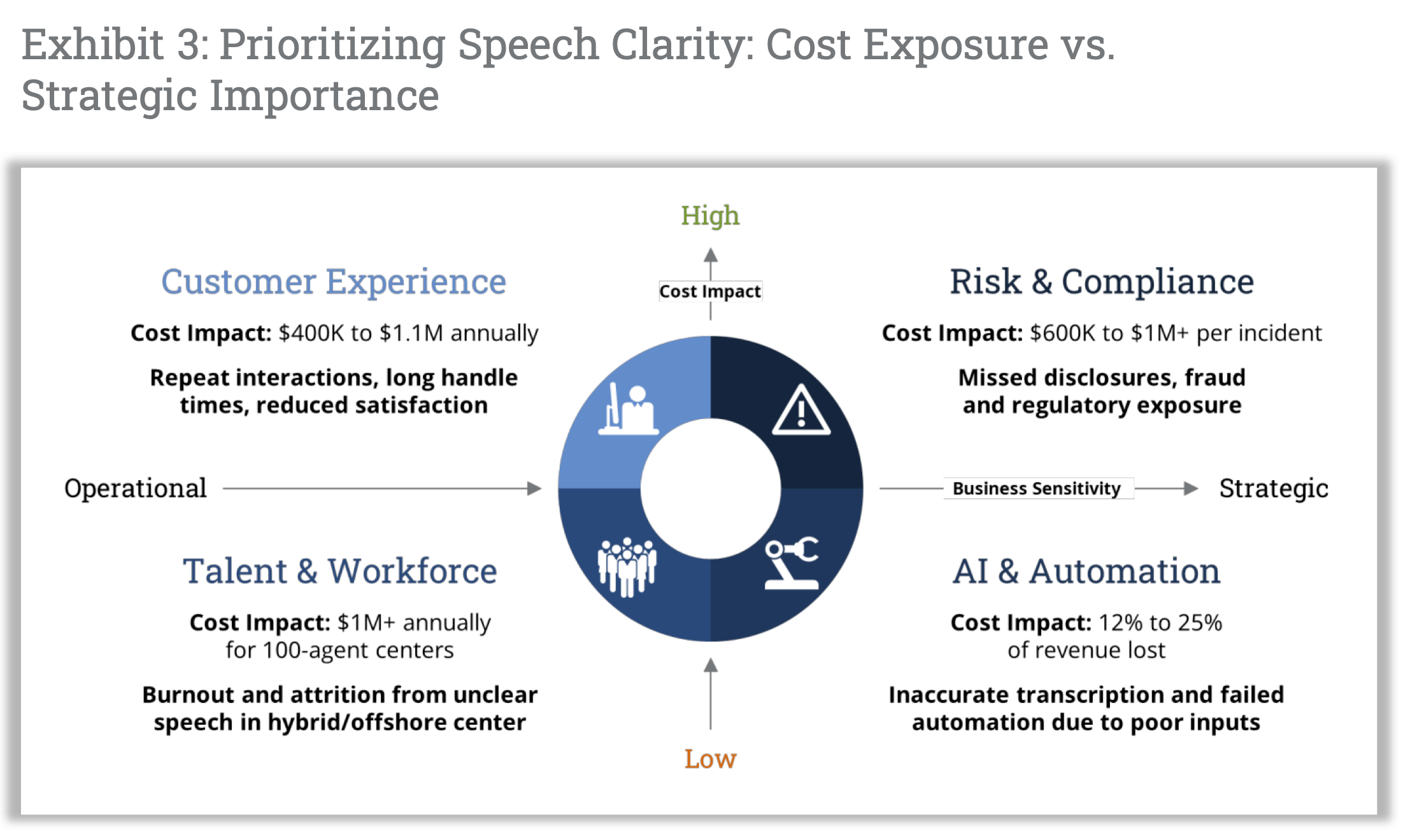The High Cost of Poor Speech Clarity in the Enterprise

Poor speech clarity is not just a technical concern, it quietly limits enterprise performance in ways that are often underrecognized and rarely measured. Every unclear interaction introduces friction, increases cost, and elevates risk across service operations. And when scaled across thousands of agents and millions of calls, the business impact is both significant and systemic.
Find out how ISG breaks down the four domains where speech clarity issues surface most visibly, and download the whitepaper, The Clarity Advantage, for the full framework, case studies, and strategies to address them.
1. Customer Experience: More Calls, Lower Loyalty
Unclear communication drives repeat interactions, longer handle times, and poor first-contact resolution. Industry estimates suggest 15% to 20% of inbound calls are avoidable repeats, often caused by misunderstood conversations.
For a contact center handling 1M calls a year, this adds up to $1.1M in excess cost at $2.70 to $5.60 per live agent call. The downstream impact is even greater: reduced satisfaction, churn, and lower customer lifetime value.
2. Risk & Compliance: When Misunderstanding Becomes Liability
In regulated industries, a single missed disclosure or failed verification can trigger audits, penalties, or worse, especially with the rise of voice fraud and deepfake attacks.
One incident can cost $600K to $1M+, not including remediation and reputational fallout. Without clarity, even the best compliance systems can’t perform.
3. Talent Efficiency: Burnout at the Frontline
Agents struggling to hear or be heard, especially in offshore, hybrid, or noisy environments, experience higher cognitive load, fatigue, and error rates. The result is turnover.
Contact center attrition averages 35% to 40% annually, with replacement costs at $10K to $20K per agent. That’s $1M+ in turnover cost for a 100-agent operation, before factoring in ramp time and lost productivity.
Clarity reduces effort, builds confidence, and improves retention, especially in remote or multilingual teams.
4. AI & Automation: Garbage In, Failure Out
AI systems rely on clean, structured speech data. If clarity is compromised, transcriptions are flawed, intent is misread, and automation breaks down.
Research shows 12% to 25% of enterprise revenue is lost due to poor data quality, and speech is among the most error-prone inputs. Without clear speech data, AI investments underdeliver or outright fail.

A Roadmap for Enterprises Ready to Scale Clarity
When taken together, these four domains illustrate why speech clarity can no longer be dismissed as a narrow call quality issue. Its absence fuels customer churn, exposes companies to regulatory penalties, drives up workforce attrition, and undermines the very AI systems enterprises are betting on for the future.
ISG’s research makes one thing clear: clarity isn’t a marginal enhancement, it’s infrastructure. Enterprises that embed clarity into CX programs, compliance controls, workforce strategies, and AI pipelines position themselves not just to reduce costs, but to build resilience and trust at scale.
Download The Clarity Advantage for the full analysis, including ISG’s Speech Clarity Maturity Framework and case studies from global enterprises.












